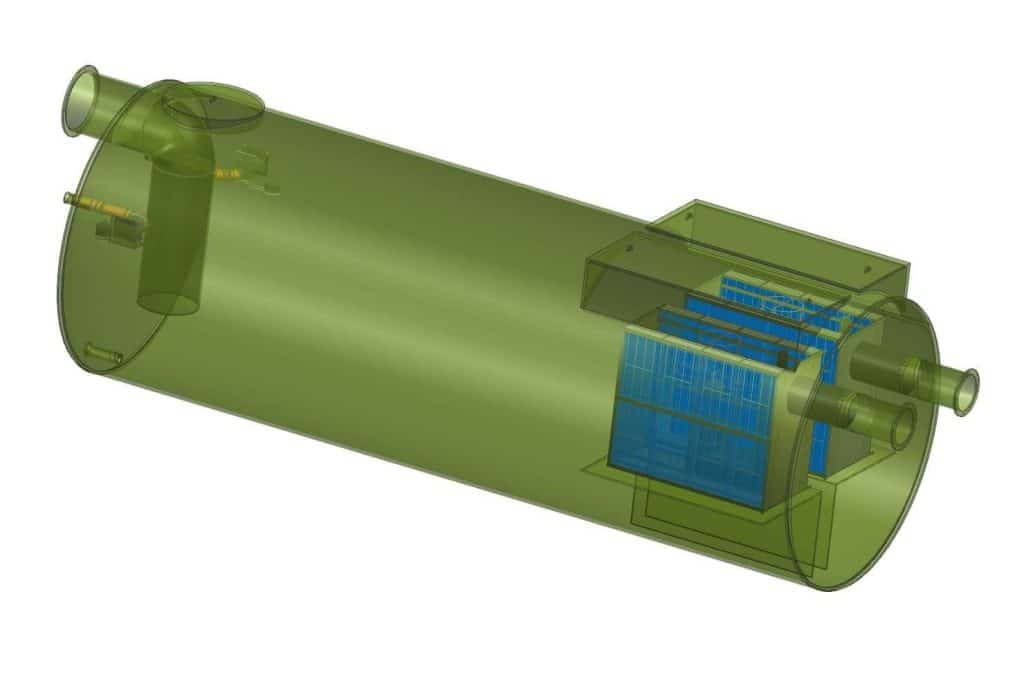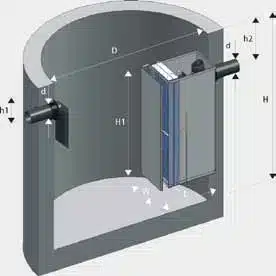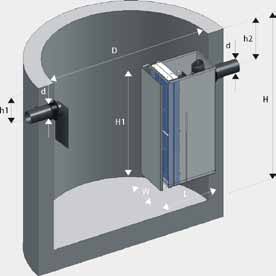Ever wondered how New York keeps its waterways clean, despite being so busy? The secret is underground. New York Below Ground OWS systems are key to keeping the water clean. They are a big part of the city’s hidden infrastructure.
These underground networks of oil-water separators work hard to protect our environment. They take out pollutants from the water before it goes out, following strict environmental rules. As New York grows, these hidden systems become even more important.
Key Takeaways
- New York Below Ground OWS systems are vital for urban water quality
- They form a critical part of the city’s underground infrastructure
- Freytech Inc. OWS systems efficiently separate oil from water
- They help meet strict environmental regulations
- These systems are crucial for New York’s sustainable growth
Introduction to Below Ground Oil Water Separators in New York
New York City’s complex infrastructure uses Below Ground OWS to handle wastewater well. These systems are key in treating polluted water from industrial sites, transportation hubs, and urban projects.
Definition and Purpose of OWS Systems
Below Ground OWS are special devices that separate oil and pollutants from water. They are crucial in places with a lot of water pollution, like oil storage areas, car repair shops, and clean-up sites.
Importance in Urban Infrastructure
In New York’s crowded city, Below Ground OWS are key parts of utility tunnels and subways. They keep waterways clean by stopping oil and grease from getting into sewers. This is very important in busy areas or places with lots of industry.
Regulatory Compliance in New York City
New York City has strict rules for handling wastewater. The City’s Board of Standards and Appeals has approved certain OWS systems. This ensures they meet environmental standards. It helps keep the city’s water clean and protects its utility tunnels and subways from pollution.
Types of Underground OWS Systems for New York Applications
New York City’s diverse urban landscape needs different Below Ground Oil Water Separators. These systems are key to keeping sewers and underground vaults clean.
Cylindrical Underground Separators
Cylindrical separators are a top choice in New York for their smart design. The HT-2040 model is great for tight spots in the city. It removes oil from water before it gets into the sewer system.
Fiberglass vs. Steel Construction
Separator tanks are made of steel or fiberglass. Steel tanks are strong and work well with many substances. Fiberglass tanks don’t rust, making them good for certain places. The choice depends on the site and what it needs.
Customized Solutions for Industries
Different industries in New York need special Below Ground Oil Water Separators. Airports need big systems for jet fuel. Electric utilities and power plants have their own separators for their waste.
Industrial places often need strong systems for tough contaminants. The petroleum industry uses top-notch separators to protect local water.
New York Below Ground OWS: Design and Functionality
New York’s underground oil water separators have a modern design. They are set up in cellars and bunkers. These systems use the latest technology to split oil and water efficiently.
The design includes removable Corella® and Petro-Screen coalescers. These can be accessed from above ground, making maintenance easy.

Inside, there are special baffles and coalescers that help speed up the oil and water separation. This makes the water cleaner, with only 10 ppm of oil left. The separators also have big manways and light panels on top for easy checks and cleanings.
Safety is a big deal in these underground systems. They have a double-wall setup with leak monitoring in between. This is super important in New York, where keeping the environment clean is key.
These OWS systems are made to work well in New York’s busy city life. They can handle lots of water flow and different kinds of pollutants. The design is strong and reliable, even in tough underground spots.
Installation Process and Considerations in New York City
Installing below ground oil water separators in New York City requires careful planning and execution. It involves complex underground infrastructure and subterranean networks unique to urban areas.
Site Preparation and Excavation
Before starting, a thorough site assessment is key. It includes mapping existing underground utilities and checking soil conditions. Excavation must be precise to avoid harming nearby subterranean networks. Heavy machinery operators need special training for working in tight urban spaces.
Compliance with Local Building Codes
New York City has strict rules for underground installations. Contractors must get the right permits and follow specific guidelines. These rules cover things like separator size, material quality, and safety features. Regular checks during installation make sure everything meets local building codes.
Connection to Existing Infrastructure
Connecting the new separator to the city’s underground infrastructure needs expertise. Installers must link the system to existing sewer lines without stopping service. This often means working around other utilities in small underground spaces. Proper venting and monitoring systems are key for long-term safety and function.
The installation process in New York City is complex but vital for keeping the city’s environment clean. With proper planning and execution, below ground oil water separators work well within the city’s vast underground networks.
These separators are crucial in storm water systems. They process runoff to meet the US EPA’s Clean Water Act standards. With effective oily water treatment, facilities protect the environment and dodge big fines.
Maintenance and Monitoring of Underground OWS Systems
New York’s underground oil water separators need regular upkeep to work well. These systems are often found near utility tunnels and subways. Owners must clean them and remove waste oil when alarms sound, showing high levels.
This keeps the separators running smoothly and stops oil from getting into sewers. It’s important for the city’s underground infrastructure.
Double-wall separators have special leak detection systems. These tools watch for any signs of problems between the walls. Catching issues early helps crews fix them before they get worse.
This careful monitoring protects New York’s underground infrastructure, including utility tunnels. It’s a smart way to keep everything running smoothly.
Proper care of OWS systems is key to following environmental rules. Companies like American Petroleum Equipment & Construction Company offer 24/7 services for underground tanks. Their experts know how to keep these vital systems working right.
This helps protect New York’s subways and sewers from oil contamination. It’s a big part of keeping the city clean and safe.









